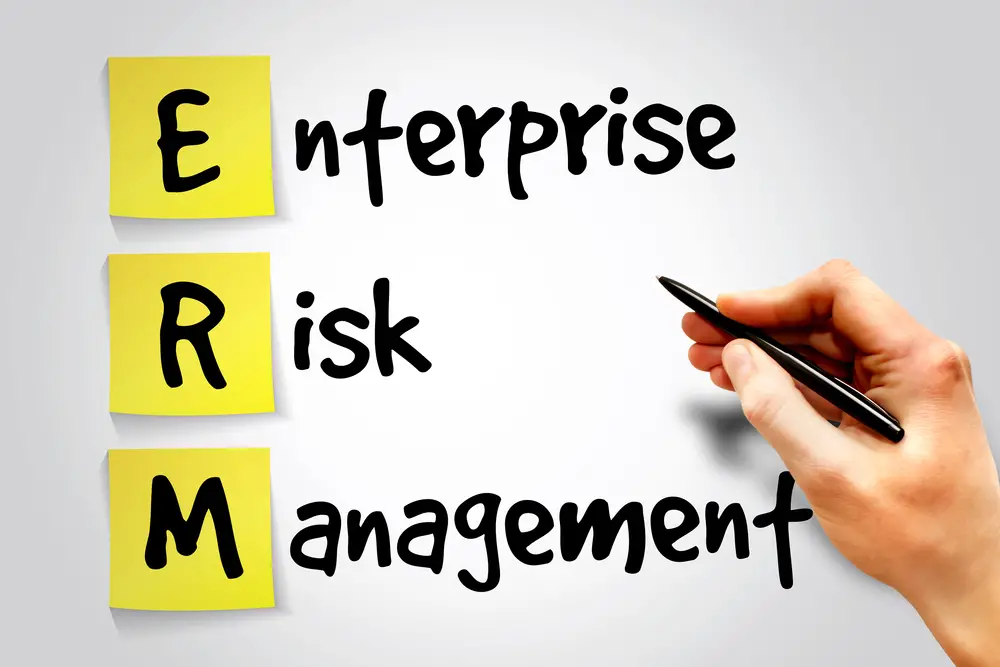Enterprise Risk Management (ERM) is an integrated and joined up approach to managing risk across an organisation and its extended networks. ERM includes financial risks, strategic risks, operational risks and risks associated with accidental losses. It is a framework for identifying, assessing, monitoring, and responding to any event that could impact the organisation’s objectives.
Organisations use ERM to identify potential threats or opportunities that may affect their operations or performance. This helps them to take proactive steps to mitigate the risk of loss or gain from such events. ERM also provides organisations with the ability to respond quickly and effectively when faced with unexpected events.
ERM enables organisations to develop strategies for dealing with potential risks in a systematic way. It involves setting up processes for monitoring risk levels and taking corrective action when necessary. By implementing effective ERM practices, organisations can better manage their resources, reduce costs, improve efficiency, and increase profitability.
Effective risk management proves crucial for any organization’s survival and long-term success. Enterprise Risk Management (ERM) provides a comprehensive and integrated framework for identifying, assessing, and managing risks across the entire enterprise.
Enterprise Risk Management goes beyond traditional risk management, which often focuses on individual risks in isolation. ERM fosters a holistic approach, helping organizations gain a clearer understanding of their overall risk exposure and the potential impact on their strategic objectives.
Aligning risk management with corporate strategy, ERM enables organizations to make more informed decisions and maintain a competitive advantage.
In this blog post, we delve into the fundamentals of ERM, discussing its key components and the roles and responsibilities of various stakeholders. We explore the numerous benefits of implementing ERM, including enhanced decision-making, regulatory compliance, and a stronger risk culture. We also share best practices for ERM success, common challenges, and case studies showcasing real-world ERM applications.
Discover the essentials of Enterprise Risk Management and learn how your organization can harness its power to achieve sustainable growth and long-term success in an uncertain world.
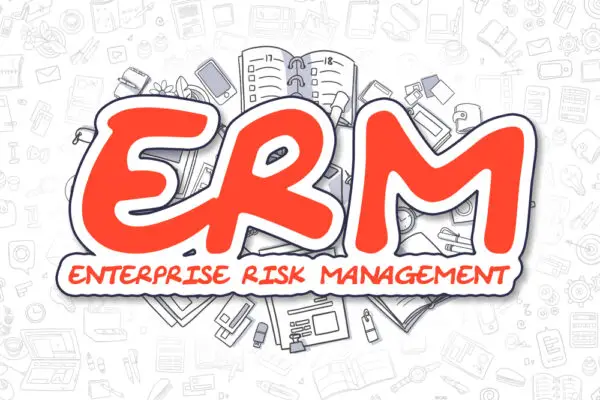
Understanding Enterprise Risk Management (ERM) Fundamentals
Defining Enterprise Risk Management: A Comprehensive Approach
Enterprise Risk Management (ERM) encompasses a systematic process for identifying, assessing, and managing risks across an organization. ERM takes a holistic approach, considering the interdependencies among various risks and their cumulative impact on an organization’s objectives. Integrating risk management with strategic planning, ERM empowers organizations to make informed decisions and proactively mitigate potential threats.
One of the key differences between ERM and traditional risk management lies in the scope and perspective. ERM looks beyond individual risks and focuses on the broader risk landscape, allowing organizations to understand the root causes of risks and their potential ripple effects. By incorporating a comprehensive approach, ERM helps organizations prioritize resources and target the most significant risks that could affect their overall performance and strategic goals.
An essential aspect of ERM is risk appetite, which represents the level of risk an organization is willing to accept to achieve its objectives. Establishing a clear risk appetite helps organizations strike a balance between pursuing opportunities and managing risks, driving better decision-making and ensuring a resilient business model.
The Evolution of ERM: From Traditional Risk Management to Holistic Strategies
Traditional risk management primarily focused on individual risks and often operated in silos, lacking a comprehensive view of the organization’s risk landscape. ERM has evolved to address these limitations, offering a unified framework that considers the organization as a whole.
This shift towards holistic risk management enables organizations to understand the interconnected nature of risks, assess their aggregate impact, and prioritize mitigation efforts effectively.
Over the years, several risk management models and standards have emerged to guide organizations in implementing ERM. Notably, the Committee of Sponsoring Organizations of the Treadway Commission (COSO) developed the ERM – Integrated Framework, while the International Organization for Standardization (ISO) published the ISO 31000:2018 Risk Management guidelines. These frameworks have significantly influenced the adoption and maturation of ERM practices worldwide.
Moreover, increased regulatory scrutiny and stakeholder expectations have accelerated the evolution of ERM. Organizations now recognize the importance of a robust ERM framework in maintaining stakeholder trust, ensuring compliance, and driving long-term value creation.
Key Components of an Effective ERM Framework
An effective ERM framework consists of several crucial components:
Risk identification:
Systematically uncovering potential risks that could affect the organization’s objectives. This process includes gathering information from various sources, such as historical data, employee feedback, industry analysis, and scenario planning. A comprehensive risk identification process helps organizations proactively address emerging risks and capitalize on potential opportunities.
Risk assessment:
Analyzing and quantifying the likelihood and impact of identified risks. Risk assessment involves prioritizing risks based on their potential consequences and the organization’s risk appetite. This step enables organizations to focus their resources on the most significant risks and develop targeted mitigation strategies.
Risk response:
Developing strategies to mitigate, accept, transfer, or avoid risks based on the organization’s risk appetite. Risk response plans should be flexible, allowing organizations to adapt to changing circumstances and respond effectively to unforeseen events. Continuous improvement and learning from past experiences are critical for refining risk response strategies and enhancing the organization’s risk resilience.
Control activities:
Implementing policies, procedures, and measures to manage and monitor risks. Control activities range from preventive measures, such as employee training and system controls, to detective measures, like internal audits and performance reviews. Effective controls help organizations maintain risk exposure within acceptable levels and ensure compliance with laws, regulations, and internal policies.
Information and communication:
Ensuring transparent and timely sharing of risk-related information across the organization. Effective communication channels facilitate collaboration among stakeholders, support informed decision-making, and foster a culture of risk awareness and accountability.
This involves establishing clear reporting lines, leveraging technology for risk data management, and promoting a continuous dialogue on risk-related issues among employees, management, and the board of directors.
Monitoring and review:
Regularly evaluating the effectiveness of the ERM framework and updating it as needed to address changing conditions. Monitoring activities include tracking risk indicators, conducting internal audits, and reviewing risk management performance against established objectives. Continuous improvement is vital for adapting the ERM framework to new risks, regulatory requirements, and emerging best practices.
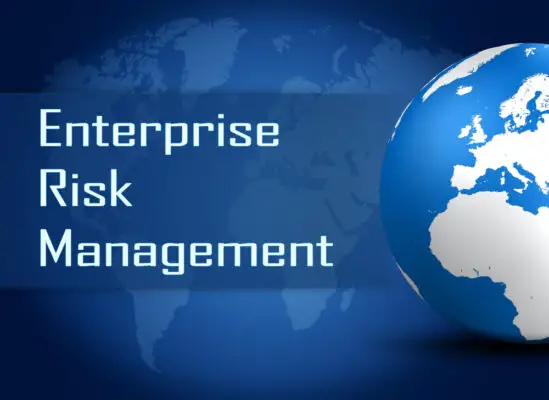
Roles and Responsibilities: Who’s Accountable for ERM?
Successful ERM implementation relies on clearly defined roles and responsibilities across the organization:
Board of Directors:
The board sets the tone for risk culture and oversees the ERM framework’s effectiveness. They are responsible for approving the organization’s risk appetite, ensuring alignment with strategic objectives, and monitoring the overall risk profile.
The board should also provide guidance and support to management in implementing ERM and integrating risk considerations into decision-making processes.
Senior Management:
Senior management develops and communicates the organization’s risk appetite and ensures alignment with strategic objectives. They are responsible for implementing the ERM framework, allocating resources, and fostering a risk-aware culture throughout the organization.
Senior management should also regularly report to the board on risk management performance, emerging risks, and the effectiveness of risk mitigation strategies.
Risk Management Committee:
The risk management committee coordinates risk management activities, monitors risk exposure, and provides guidance on risk-related issues. This cross-functional committee, comprising representatives from different business units and functions, ensures a comprehensive and integrated approach to risk management.
The risk management committee should report to senior management and the board on key risk exposures, trends, and risk management performance.
Risk Owners:
Risk owners identify, assess, and manage risks within their respective areas of responsibility. They develop and implement risk mitigation strategies, monitor risk indicators, and report on risk management performance. Risk owners should collaborate with other risk owners and the risk management committee to ensure a coordinated approach to risk management across the organization.
Employees:
All employees play a crucial role in ERM by understanding and adhering to risk management policies and procedures. They should actively participate in risk identification and mitigation efforts and report potential risks or control weaknesses to their supervisors or risk owners.
Employees’ commitment to risk management helps foster a strong risk culture and ensures the organization’s long-term success.
comprehensive approach to risk management enables organizations to navigate an increasingly complex and uncertain business environment, achieve sustainable growth, and create lasting value for stakeholders.
The Benefits of Implementing Enterprise Risk Management
Enhancing Decision-Making with ERM Insights
Implementing Enterprise Risk Management provides organizations with valuable insights that enhance decision-making processes at all levels. ERM enables decision-makers to better understand the potential risks and opportunities associated with various strategic initiatives, investments, and operational decisions.
Integrating risk management into decision-making processes allows organizations to make more informed choices that account for the potential impact of risks on their objectives.
ERM promotes a data-driven approach to risk management, helping organizations identify trends, patterns, and correlations among various risks. Leveraging risk data and analytics, organizations can develop more effective risk mitigation strategies and optimize resource allocation.
Furthermore, ERM insights contribute to continuous improvement and learning, as organizations learn from past experiences and refine their risk management practices accordingly.
Aligning ERM with Corporate Strategy for Long-Term Success
One of the primary benefits of implementing ERM is its alignment with an organization’s corporate strategy. ERM ensures that risk management objectives are in sync with the organization’s overall goals and priorities. Aligning ERM with strategic planning allows organizations to proactively identify and address risks that may hinder their ability to achieve their objectives.
ERM helps organizations strike a balance between risk-taking and risk management. Establishing a clear risk appetite enables organizations to pursue opportunities while keeping potential risks within acceptable levels.
This risk-aware approach to strategic planning allows organizations to maintain a competitive advantage in an increasingly complex and uncertain business environment.
ERM facilitates scenario planning and stress testing, helping organizations assess their resilience to potential adverse events and market disruptions. Evaluating their ability to withstand shocks and adapt to changing conditions enhances strategic agility and prepares organizations for future challenges.
Strengthening Risk Culture: Empowering Employees with ERM
A robust risk culture is essential for effective risk management, and ERM plays a critical role in fostering risk awareness and accountability throughout the organization. ERM empowers employees with the knowledge, tools, and resources needed to identify, assess, and manage risks in their day-to-day activities.
Employee involvement in risk management processes is crucial for identifying emerging risks, improving risk mitigation strategies, and promoting a sense of shared responsibility for risk management.
ERM encourages open communication and collaboration among employees, management, and the board of directors, enabling organizations to address risks more proactively and efficiently.
Embedding risk management principles into the organization’s culture, ERM contributes to a more risk-aware workforce that is better equipped to navigate uncertainties and capitalize on opportunities. This ultimately leads to improved organizational performance and long-term success.
Regulatory Compliance and ERM: Building Trust and Credibility
Regulatory compliance is a critical aspect of risk management, and ERM plays a vital role in helping organizations meet their compliance obligations. A well-designed ERM framework ensures that organizations have the necessary policies, procedures, and controls in place to comply with applicable laws, regulations, and industry standards.
ERM promotes transparency and accountability, enabling organizations to demonstrate their commitment to ethical conduct and responsible risk management. Maintaining compliance and proactively addressing potential issues allows organizations to build trust and credibility among regulators, investors, customers, and other stakeholders.
ERM helps organizations anticipate and respond to changing regulatory requirements, minimizing the risk of non-compliance and its associated costs.
Staying abreast of regulatory developments and integrating compliance risk management into the ERM framework enables organizations to protect their reputation, avoid penalties, and maintain a strong market position.
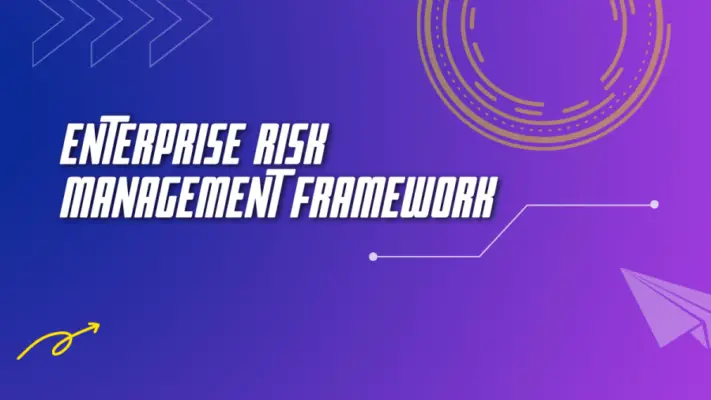
Best Practices for Enterprise Risk Management Success
Identifying and Assessing Risks Across the Organization
A crucial step in implementing a successful ERM program is the identification and assessment of risks across the entire organization. To achieve this, organizations should adopt a systematic and comprehensive approach that covers all aspects of their operations. Here are some best practices to consider:
Develop a risk inventory:
Create a comprehensive list of potential risks that may impact the organization, considering factors such as industry trends, market dynamics, and internal operations. This risk inventory should be updated regularly to reflect changing circumstances and emerging risks.
Conduct risk assessments:
Assess the likelihood and impact of identified risks using qualitative and quantitative methods. This process should involve input from various stakeholders, including employees, management, and external experts, to ensure a balanced and comprehensive understanding of risks.
Prioritize risks:
Rank risks based on their potential impact and likelihood to help prioritize mitigation efforts and allocate resources effectively. This prioritization should be aligned with the organization’s risk appetite and strategic objectives.
Integrate risk assessments into decision-making processes: Ensure that risk assessments are integrated into strategic planning, budgeting, and operational decision-making processes. This integration helps organizations make informed decisions that account for potential risks and opportunities.
Developing and Implementing Risk Mitigation Strategies
Once risks have been identified and assessed, organizations must develop and implement risk mitigation strategies to manage their exposure. Here are some best practices for effective risk mitigation:
Establish clear risk mitigation objectives:
Define the desired outcomes of risk mitigation efforts, such as reducing the likelihood of a risk event, minimizing its impact, or transferring the risk to a third party. These objectives should be aligned with the organization’s risk appetite and strategic goals.
Develop risk mitigation strategies:
Design and implement strategies to address prioritized risks, considering factors such as cost-effectiveness, feasibility, and potential impact on the organization’s objectives. These strategies may include risk avoidance, reduction, transfer, or acceptance, depending on the specific risk and organizational context.
Assign responsibility for risk mitigation:
Ensure that risk owners are accountable for implementing risk mitigation strategies within their respective areas of responsibility. This accountability helps foster a sense of shared responsibility for risk management across the organization.
Monitor the effectiveness of risk mitigation strategies:
Regularly review and evaluate the effectiveness of risk mitigation strategies to ensure they are achieving their intended objectives. This monitoring process should include tracking risk indicators, conducting audits, and reviewing performance against established benchmarks.
Monitoring and Reporting on ERM Performance
Effective monitoring and reporting on ERM performance are critical to ensuring the ongoing success of an organization’s risk management efforts. Here are some best practices for monitoring and reporting:
- Establish key risk indicators (KRIs):
Identify and track quantitative and qualitative metrics that provide early warning signs of potential risk events or changes in risk exposure. These KRIs should be linked to the organization’s risk appetite and strategic objectives.
- Implement a robust reporting framework:
Develop a reporting framework that provides regular updates on ERM performance to key stakeholders, including employees, management, and the board of directors. This framework should include clear, concise, and actionable information on risk exposures, mitigation efforts, and emerging risks.
- Leverage technology for risk monitoring and reporting:
Utilize risk management software and data analytics tools to automate risk monitoring and reporting processes, enhance data quality, and enable real-time insights.
- Foster a continuous dialogue on risk-related issues:
- Encourage open communication and collaboration among stakeholders to promote a proactive approach to risk management and facilitate ongoing learning and improvement.
Continuously Improving ERM Processes for Sustainable Growth
Continuous improvement is essential for ensuring the long-term success of an organization’s ERM program. Organizations should regularly review and refine their ERM processes to keep pace with the changing business environment and evolving risks. Here are some best practices for continuous improvement:
- Conduct regular ERM reviews:
Periodically evaluate the overall effectiveness of the ERM program, including risk identification, assessment, mitigation, monitoring, and reporting processes. These reviews should involve input from various stakeholders and consider feedback from internal and external audits.
- Learn from past experiences:
Analyze past risk events, near misses, and successful risk mitigation efforts to identify areas for improvement and lessons learned. Use this information to refine ERM processes and enhance risk management capabilities.
- Benchmark against industry best practices:
Compare your organization’s ERM practices with industry peers and leading organizations to identify gaps and opportunities for improvement. Stay informed of emerging trends and best practices in risk management to ensure your ERM program remains up-to-date and effective.
- Foster a culture of continuous improvement:
Encourage employees at all levels to actively participate in the ongoing improvement of ERM processes. This involvement can include sharing feedback, suggesting new ideas, or participating in cross-functional improvement initiatives.
- Adapt to change:
Be prepared to adjust ERM processes and practices in response to changes in the business environment, organizational structure, or strategic objectives. This adaptability is essential for maintaining the relevance and effectiveness of the ERM program over time.
Challenges and Common Pitfalls in Enterprise Risk Management
Overcoming Resistance to ERM Implementation
One of the primary challenges organizations face in implementing Enterprise Risk Management is resistance from employees and management. Resistance may stem from various factors, such as concerns about increased workload, fear of change, or a lack of understanding of the benefits of ERM.
To overcome resistance and ensure successful ERM implementation, organizations should consider the following approaches:
Communicate the benefits of ERM:
Clearly articulate the value of ERM to all stakeholders, emphasizing its role in enhancing decision-making, improving performance, and supporting long-term success. Use real-world examples and case studies to demonstrate the positive impact of ERM on other organizations.
Involve stakeholders in the ERM process:
Engage employees, management, and other stakeholders in the development and implementation of ERM processes, ensuring their input and feedback are taken into account. This involvement helps build ownership and commitment to the ERM program.
Provide training and support:
Offer comprehensive training and ongoing support to help stakeholders understand ERM concepts, tools, and processes. This support may include workshops, webinars, or one-on-one coaching sessions tailored to the needs of different stakeholders.
Recognize and reward ERM efforts:
Acknowledge and reward employees and teams that contribute to the success of the ERM program, whether through risk identification, effective risk mitigation, or continuous improvement initiatives. This recognition fosters a positive risk culture and encourages employees to embrace ERM.
Navigating ERM in a Complex and Dynamic Business Environment
The rapidly changing business environment presents another challenge for organizations seeking to implement ERM. With shifting market conditions, evolving regulations, and emerging risks, organizations must remain agile and adaptive in their approach to risk management. Here are some strategies to help organizations navigate ERM in a complex and dynamic environment:
Stay informed of industry trends and emerging risks:
Monitor the business environment for changes and developments that may impact the organization’s risk profile. This monitoring can include subscribing to industry newsletters, participating in professional networks, or conducting periodic environmental scans.
Adopt a flexible ERM framework:
Implement an ERM framework that can adapt to changing circumstances and emerging risks. This flexibility may involve incorporating scenario planning, stress testing, or other tools that enable organizations to assess and respond to a wide range of potential risks.
Foster a learning culture:
Encourage continuous learning and improvement in ERM processes, enabling organizations to refine their approach and stay ahead of emerging risks. This learning culture can be supported by regular training, sharing of best practices, and collaborative problem-solving.
Leverage technology to enhance ERM capabilities:
Utilize risk management software, data analytics, and other technological tools to improve ERM processes and adapt to the changing business environment. These tools can help organizations identify trends, automate risk monitoring, and enhance decision-making capabilities.
Ensuring Data Quality and Integration for Accurate Risk Assessment
Accurate risk assessment relies on high-quality, integrated data from various sources across the organization. However, ensuring data quality and integration can be a challenge, particularly for organizations with complex structures, multiple data sources, or siloed information systems. To address this challenge, organizations should consider the following best practices:
- Develop data governance policies and procedures:
Establish clear guidelines and processes for data management, including data collection, storage, and sharing. These policies should address issues such as data accuracy, consistency, and security, ensuring that risk data is reliable and up-to-date.
- Implement data integration solutions:
Utilize data integration tools and platforms to consolidate and harmonize risk data from various sources across the organization. This integration enables a more holistic view of risks and facilitates more accurate risk assessments.
- Conduct regular data quality audits:
Perform periodic audits of risk data to identify and address data quality issues, such as inconsistencies, inaccuracies, or outdated information. These audits can help organizations maintain high-quality risk data and ensure more accurate risk assessments.
- Foster a culture of data-driven decision-making:
Encourage employees at all levels to prioritize data quality and utilize risk data in their decision-making processes. This focus on data-driven decision-making helps ensure that risk assessments are based on reliable, up-to-date information.
Balancing Costs and Benefits of ERM Programs
Implementing an ERM program requires a significant investment of time, resources, and effort. Organizations must strike a balance between the costs and benefits of ERM to ensure a positive return on investment. Below are some strategies for balancing costs and benefits of ERM programs:
- Align ERM with strategic objectives: Ensure that ERM efforts are focused on risks that are most relevant to the organization’s strategic goals and priorities. This alignment helps ensure that resources are allocated efficiently and that ERM initiatives deliver maximum value.
- Optimize resource allocation: Prioritize risk mitigation efforts based on the potential impact and likelihood of risks, as well as the cost-effectiveness of mitigation strategies. This prioritization helps organizations allocate resources more effectively, focusing on the highest-value risk management activities.
- Leverage technology to improve efficiency: Utilize risk management software, data analytics tools, and other technologies to automate and streamline ERM processes. These tools can help organizations reduce the time and effort required to manage risks while enhancing the accuracy and effectiveness of risk assessments.
- Monitor and measure ERM performance: Regularly evaluate the performance of ERM programs, tracking key risk indicators, and measuring the effectiveness of risk mitigation strategies. This monitoring and measurement help organizations identify areas for improvement and optimize their ERM efforts for maximum impact.
Case Studies: Enterprise Risk Management in Action
ERM Success Story: Proactive Risk Management in the Financial Sector
In the aftermath of the 2008 financial crisis, India Infoline is India‟s leading integrated financial services group recognized the need to strengthen its risk management capabilities. By implementing a comprehensive ERM program, the bank aimed to enhance decision-making, protect its reputation, and ensure regulatory compliance.
The bank began by establishing a dedicated risk management function, led by a Chief Risk Officer (CRO) who reported directly to the CEO. The CRO was responsible for overseeing the development and implementation of a risk management framework that integrated risk assessments into strategic planning, budgeting, and decision-making processes.
To identify and prioritize risks, the bank conducted a thorough risk assessment, engaging employees and external experts to gather input on potential risks and their potential impact on the organization. The risk assessment covered a wide range of risk categories, including credit, market, operational, and reputational risks.
Based on the risk assessment, the bank developed targeted risk mitigation strategies, assigning clear ownership and accountability for each risk. These strategies included enhanced risk monitoring and reporting, as well as the implementation of advanced risk management tools and technologies.
As a result of its ERM efforts, the bank experienced a significant improvement in risk management capabilities, reducing its exposure to financial losses and ensuring compliance with regulatory requirements. The bank’s proactive approach to risk management has also enhanced its reputation among investors, customers, and regulators, contributing to its long-term success.
How a Manufacturing Company Reduced Supply Chain Risks with ERM
Ashok Leyland Limited (hereinafter referred to as, “Ashok Leyland”, or “the Company”), flagship of the Hinduja group, is the 2nd largest manufacturer of Commercial Vehicles in Indi faced significant supply chain risks, including disruptions due to natural disasters, geopolitical tensions, and supplier failures.
Recognizing the potential impact of these risks on its operations and financial performance, the company decided to implement an ERM program to strengthen its supply chain risk management capabilities.
The company started by identifying and assessing supply chain risks, engaging employees from various functions, including procurement, logistics, and operations, to ensure a comprehensive understanding of potential risks. This collaborative approach enabled the company to develop a detailed risk inventory, prioritizing risks based on their potential impact and likelihood.
To mitigate these risks, the company implemented a range of risk mitigation strategies, such as diversifying its supplier base, increasing inventory levels of critical components, and implementing contingency plans for potential disruptions. Additionally, the company invested in advanced supply chain risk management software to enhance its risk monitoring and reporting capabilities.
As a result of its ERM efforts, the company successfully reduced its exposure to supply chain risks, improving its resilience to disruptions and enhancing its overall operational performance. The company’s proactive approach to supply chain risk management has also contributed to its long-term competitiveness and growth.
ERM in Healthcare: Managing Patient Safety and Regulatory Risks
A large healthcare organization faced significant risks related to patient safety, regulatory compliance, and reputational damage. To address these risks and enhance its overall risk management capabilities, the organization decided to implement an ERM program.
The organization began by conducting a comprehensive risk assessment, involving employees from various departments, including clinical, administrative, and support functions. This collaborative approach ensured a holistic understanding of potential risks, enabling the organization to prioritize its risk mitigation efforts based on potential impact and likelihood.
To manage identified risks, the organization developed targeted risk mitigation strategies, such as implementing standardized clinical protocols, enhancing staff training, and investing in advanced patient safety technologies. The organization also established a robust ERM governance structure, with clear roles and responsibilities for risk management across the organization.
As a result of its ERM efforts, the healthcare organization experienced a significant reduction in patient safety incidents and improved its compliance with regulatory requirements. The organization’s commitment to ERM has also enhanced its reputation among patients, regulators, and other stakeholders, contributing to its long-term success.
Lessons Learned from ERM Failures: Avoiding Common Mistakes
Despite the many success stories of organizations implementing ERM, some companies have experienced failures in their risk management efforts, leading to significant financial losses, reputational damage, or even bankruptcy. By examining these ERM failures, organizations can learn valuable lessons and avoid making similar mistakes.
One such example is the collapse of a major retail company due to a series of poor strategic decisions and inadequate risk management. The company aggressively expanded its operations, investing heavily in new stores and acquisitions without properly assessing the associated risks. As a result, the company became over-leveraged, vulnerable to changing market conditions, and eventually filed for bankruptcy.
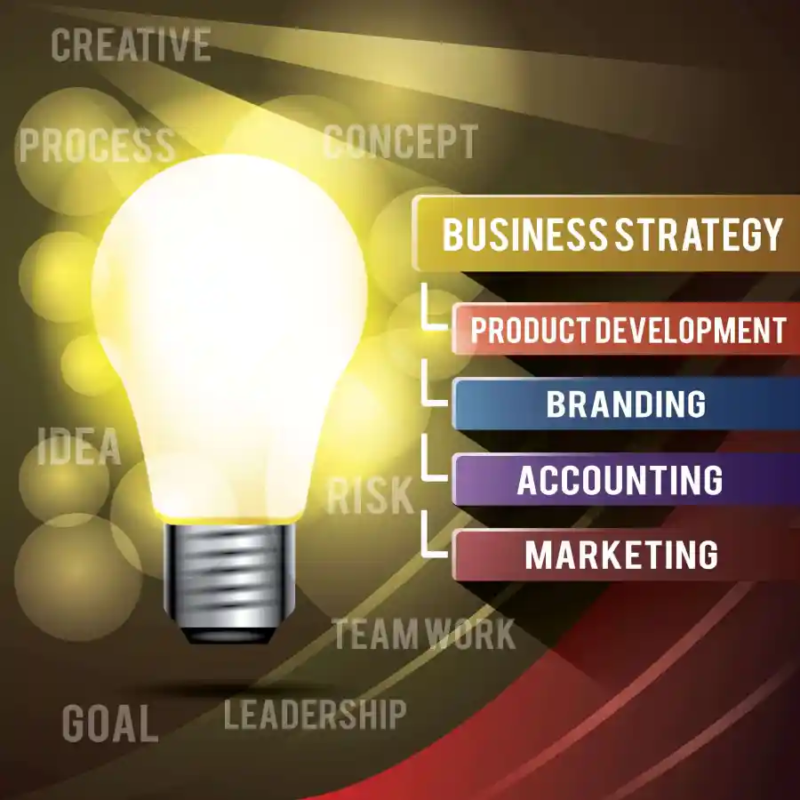
Key lessons learned from this ERM failure include:
Integrate risk management into strategic decision-making:
Organizations must ensure that risk assessments are conducted as part of their strategic planning and decision-making processes, enabling them to make informed choices and avoid overextending their resources.
Foster a strong risk culture:
Organizations should promote a culture that values risk management and encourages employees at all levels to prioritize risk identification, assessment, and mitigation in their daily activities.
Establish clear roles and responsibilities for ERM:
It is essential to have a well-defined ERM governance structure, with clear roles and responsibilities for risk management across the organization. This structure ensures accountability and enables effective oversight of risk management efforts.
Continuously monitor and adapt ERM processes:
Organizations must remain vigilant in their risk management efforts, regularly reviewing and adjusting their ERM processes to account for changing circumstances and emerging risks.
Conclusion
In this comprehensive exploration of enterprise risk management (ERM), we have delved into various aspects of ERM, including its fundamentals, benefits, best practices, challenges, and real-world case studies.
The primary goal of ERM is to provide a systematic and holistic approach to identifying, assessing, and managing risks, allowing organizations to make informed decisions and achieve long-term success.
Starting with a solid understanding of ERM fundamentals, we defined ERM as a comprehensive approach to managing risks across an organization. We traced its evolution from traditional risk management to holistic strategies and discussed the key components of an effective ERM framework. We also explored the roles and responsibilities of different stakeholders in ERM, emphasizing the need for accountability and collaboration.
The benefits of implementing ERM are numerous and include enhancing decision-making with ERM insights, aligning ERM with corporate strategy for long-term success, strengthening risk culture by empowering employees, and building trust and credibility through regulatory compliance.
To achieve ERM success, organizations must adopt best practices such as identifying and assessing risks across the organization, developing and implementing risk mitigation strategies, monitoring and reporting on ERM performance, and continuously improving ERM processes for sustainable growth.
However, ERM implementation also comes with challenges and common pitfalls. Overcoming resistance to ERM implementation, navigating ERM in a complex and dynamic business environment, ensuring data quality and integration for accurate risk assessment, and balancing costs and benefits of ERM programs are all crucial aspects to consider.
Real-world case studies of ERM in action illustrate its effectiveness in various sectors, such as financial, manufacturing, and healthcare. These examples demonstrate how proactive risk management can result in significant benefits for organizations.
Moreover, examining lessons learned from ERM failures allows organizations to avoid common mistakes and strengthen their risk management capabilities.
In closing, enterprise risk management serves as an essential tool for organizations to navigate an increasingly complex and uncertain business landscape.It is crucial for organizations to commit to ongoing ERM efforts, fostering a culture of risk awareness and continuous improvement. With the right approach and mindset, ERM can be a powerful force for positive change and growth in any organization.

Chris Ekai is a Risk Management expert with over 10 years of experience in the field. He has a Master’s(MSc) degree in Risk Management from University of Portsmouth and is a CPA and Finance professional. He currently works as a Content Manager at Risk Publishing, writing about Enterprise Risk Management, Business Continuity Management and Project Management.

